The Supreme Court, in a 6-3 decision, ruled that Title VII protects LGBTQ+ employees on the basis of sexual orientation and gender identity. This ruling is an historic legal victory for the LGBTQ community, and creates a path towards further victories. Despite the bigotry and cruelty we're surrounded by right now, every person in the LGBTQ+ community has reason to celebrate, and reason to be filled with hope after this ruling.
However, many media outlets are not including the LGBTQ+ community as a whole when they cover this decision. Some national outlets are using language like "gay, lesbian, and transgender" in their coverage of this ruling, blatantly erasing the bisexual+ (and queer) people whose lives stand to benefit from this decision. While people who identify as gender-nonconforming (using labels like nonbinary, genderqueer, agender, and more) can fall under the transgender umbrella, the use of "gay" and "lesbian" as the only words describing sexual orientation, actively removes bisexual+ people from the conversation.
I understand that journalists and outlets covering this decision may struggle finding the right language. The opinion of the Supreme Court uses the word "homosexual" in reference to sexual orientation, an archaic and often-offensive term to define people who are gay or lesbian. I understand that journalists may be using "gay and lesbian" because they think it is the most accurate reflection of the language of the opinion. However, the erasure of the bisexual+ community in this reporting is just that: erasure.
Bisexual+ people make up a majority of the LGBTQ community, and a majority of the Transgender and Gender-Nonconforming community identifies as bisexual+. Despite making up a majority of the LGBTQ community, bi+ people are often left out of coverage and conversations about the issues that the LGBTQ community faces. Unfortunately, in part to bisexual+ erasure, bi+ people face disparities across numerous areas of their lives.
One staggering statistic is that while over 70 percent of gay men and lesbian women are out to their loved ones, less than 30 percent of bisexual+ people are. Erasure, like the exclusion of bi+ people in reporting surrounding the Supreme Court decision, only makes it harder for bi+ people to be out. With a lack of understanding of bisexuality+, bi+ people often face unsafe conditions to come out. Beyond that, when bi+ people are safe to come out, they often face insurmountable misunderstanding about their identity, and will be mislabeled or made to come out repeatedly to the same people throughout their life.
Anti-bisexual+ attitudes have a devastating real world impact on bisexual+ people. The Movement Advancement Project (MAP) writes about many of the specific issues that bi+ people face in their report, "Invisible Majority: The Disparities Facing Bisexual+ People and How to Remedy Them." Bi+ people face higher rates of anxiety, depression, and other mood disorders, as well as increased rates of substance abuse. Bi+ people are more likely to live in poverty than both their straight and their gay and lesbian counterparts. Bi+ people also experience higher rates of sexual assault and intimate partner violence than their non-bisexual+ counterparts. And bi+ people exist in every community, including the transgender/gender-nonforming community, the Black community, the disabled community, in immigrant and refugee communities, and many other communities across the globe -- the bisexual+ experience intersects with the experience of other marginalized communities. There are so many impactful discussions to be had about the bisexual+ community, but bi+ erasure works to prevent these important conversations to be happening.
A major problem with the bisexual+ erasure happening in media outlets right now is that bi+ people are right in the middle of the issues that this Supreme Court decision addresses. Sixty percent of bisexual+ people have reported hearing anti-bisexual+ jokes and comments while on the job, making their workplaces less safe or comfortable for them (and often making them unable to come out as bisexual+ to their colleagues.) While this Supreme Court decision protects LGBTQ people from being fired from their jobs based on their identity, the coverage of the decision is an opportunity to push for employers to make their workplaces safer for LGBTQ people -- all LGBTQ people. Excluding bi+ people from the narrative ignores this immense opportunity.
Despite the current erasure of bisexual+ people, I am hopeful that narratives about LGBTQ issues will become more inclusive over time. Young people (aged 18 to 34) are more likely to identify with terminology that exists outside of binaries like "gay/lesbian" and "straight," and those young people are growing up and rising up in the ranks. I am sure that as young bi+ people become more and more powerful, our language and our media coverage will become more inclusive.
But I don't want to wait for that. I want the media to do better now. One first step is to include bisexual+ people in your coverage of this historic moment in LGBTQ history.
Mackenzie Harte is coordinator of the GLAAD Media Institute.
































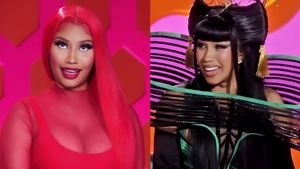



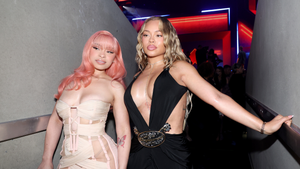













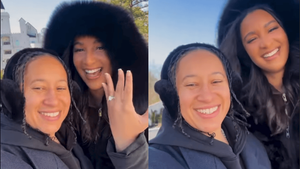












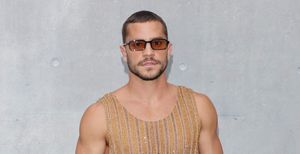
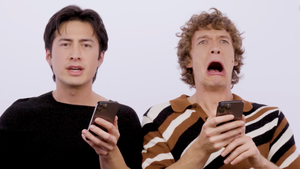



Charlie Kirk DID say stoning gay people was the 'perfect law' — and these other heinous quotes